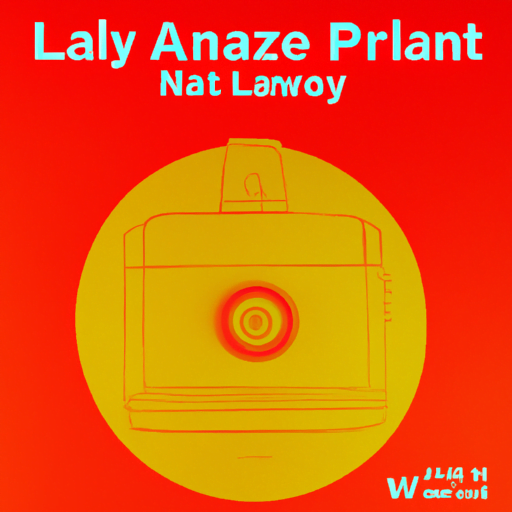
-
Table of Contents
Lance Wyman: The Master of Environmental Graphic Design

When it comes to the world of graphic design, few names carry as much weight as Lance Wyman. With a career spanning over five decades, Wyman has left an indelible mark on the field, revolutionizing the way we interact with and experience the built environment. From his iconic designs for the 1968 Mexico City Olympics to his innovative wayfinding systems for cities around the world, Wyman’s work has not only shaped the visual landscape but also enhanced our sense of place and identity. In this article, we will delve into the life and work of Lance Wyman, exploring his contributions to the field of environmental graphic design and the lasting impact of his designs.
Early Life and Education
Lance Wyman was born on November 18, 1937, in Newark, New Jersey. From a young age, he showed a keen interest in art and design, often sketching and painting in his free time. This passion led him to pursue a degree in Industrial Design at the Pratt Institute in Brooklyn, New York. During his time at Pratt, Wyman honed his skills and developed a deep understanding of the principles of design, which would later become the foundation of his groundbreaking work.
The Mexico City Olympics: A Turning Point
One of the defining moments in Lance Wyman’s career came in 1966 when he was selected to design the visual identity for the 1968 Mexico City Olympics. This project would prove to be a turning point not only for Wyman but also for the field of environmental graphic design as a whole. Wyman’s designs for the Olympics were a masterclass in simplicity and clarity, using bold colors and geometric shapes to create a visual language that transcended language barriers and effectively communicated information to a diverse audience.
One of the most iconic elements of Wyman’s Olympic designs was the logo, which featured a stylized version of the Olympic rings combined with the shape of an Aztec calendar stone. This logo became instantly recognizable and has since become synonymous with the 1968 Olympics. Wyman’s designs also extended to the signage and wayfinding systems throughout the Olympic venues, ensuring that visitors could navigate the sprawling complex with ease.
Wyman’s Approach to Environmental Graphic Design
What sets Lance Wyman apart from other graphic designers is his unique approach to environmental graphic design. Rather than simply creating visually appealing designs, Wyman focuses on the user experience and the context in which the design will be experienced. He believes that good design should not only be aesthetically pleasing but also functional and informative.
Wyman’s designs are deeply rooted in research and analysis. Before starting a project, he immerses himself in the culture, history, and context of the place he is designing for. This allows him to create designs that are not only visually striking but also deeply meaningful and relevant to the local community. For example, when designing the wayfinding system for the Washington, D.C. Metro, Wyman drew inspiration from the city’s iconic landmarks and incorporated them into the design, creating a sense of place and identity.
Case Studies: Wyman’s Impact on Cities
Throughout his career, Lance Wyman has worked on numerous projects that have had a profound impact on cities around the world. Let’s take a closer look at two case studies that highlight Wyman’s innovative approach to environmental graphic design.
1. Mexico City Metro
Following the success of his work for the 1968 Olympics, Wyman was commissioned to design the branding and wayfinding system for the Mexico City Metro. The Metro, which opened in 1969, was a massive undertaking, with over 100 stations spread across the city. Wyman’s designs played a crucial role in helping passengers navigate the complex system, using color-coded lines and easily recognizable symbols to indicate different routes and destinations.
Wyman’s designs for the Mexico City Metro not only improved the user experience but also became an integral part of the city’s identity. The iconic “M” logo, which Wyman designed for the Metro, has become a symbol of Mexico City itself, appearing on everything from t-shirts to souvenirs.
2. Minnesota Zoo
Another notable project in Lance Wyman’s portfolio is his work for the Minnesota Zoo. Wyman was tasked with creating a comprehensive wayfinding system that would guide visitors through the sprawling zoo grounds. His designs incorporated animal-themed symbols and colors, making it easy for visitors to navigate and locate different exhibits.
Wyman’s designs for the Minnesota Zoo not only improved the visitor experience but also had a positive impact on the zoo’s operations. By streamlining the wayfinding process, the zoo was able to reduce congestion and improve visitor flow, ultimately enhancing the overall experience for both visitors and staff.
Legacy and Recognition
Lance Wyman’s contributions to the field of environmental graphic design have not gone unnoticed. Throughout his career, he has received numerous awards and accolades for his groundbreaking work. In 1992, he was awarded the AIGA Medal, one of the highest honors in the design industry. In 2017, he was also honored with the National Design Award for Lifetime Achievement by the Cooper Hewitt, Smithsonian Design Museum.
Wyman’s designs continue to inspire and influence a new generation of designers. His approach to environmental graphic design, rooted in research and context, serves as a guiding principle for many aspiring designers. His work has also paved the way for the recognition of environmental graphic design as a distinct discipline within the broader field of graphic design.
Conclusion
Lance Wyman’s impact on the field of environmental graphic design cannot be overstated. Through his innovative designs and thoughtful approach, he has transformed the way we navigate and experience the built environment. From the iconic designs for the 1968 Mexico City Olympics to his groundbreaking wayfinding systems for cities around the world, Wyman’s work has left an indelible mark on the visual landscape. His legacy serves as a reminder of the power of design to shape our sense of place and identity.
